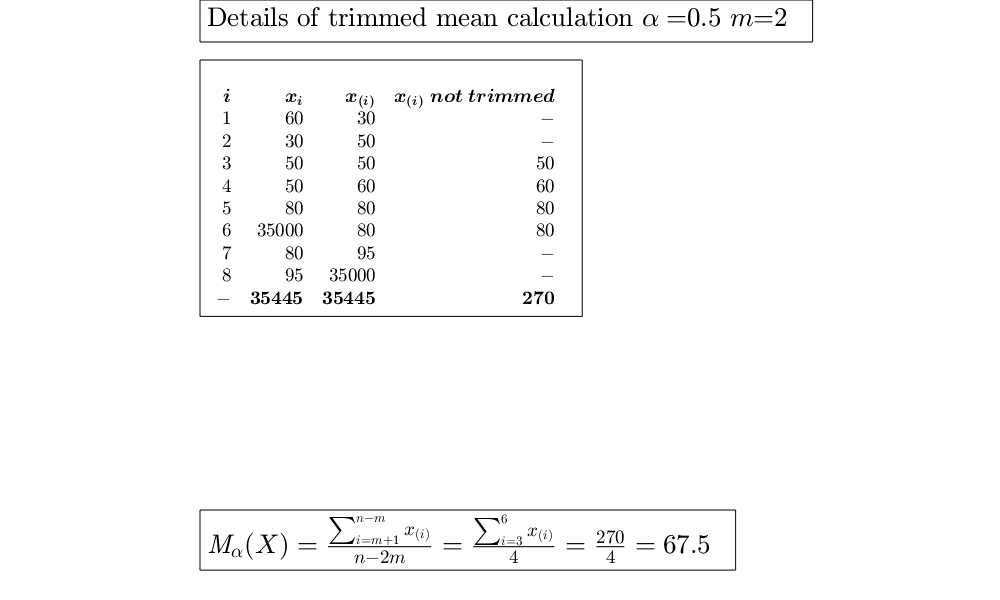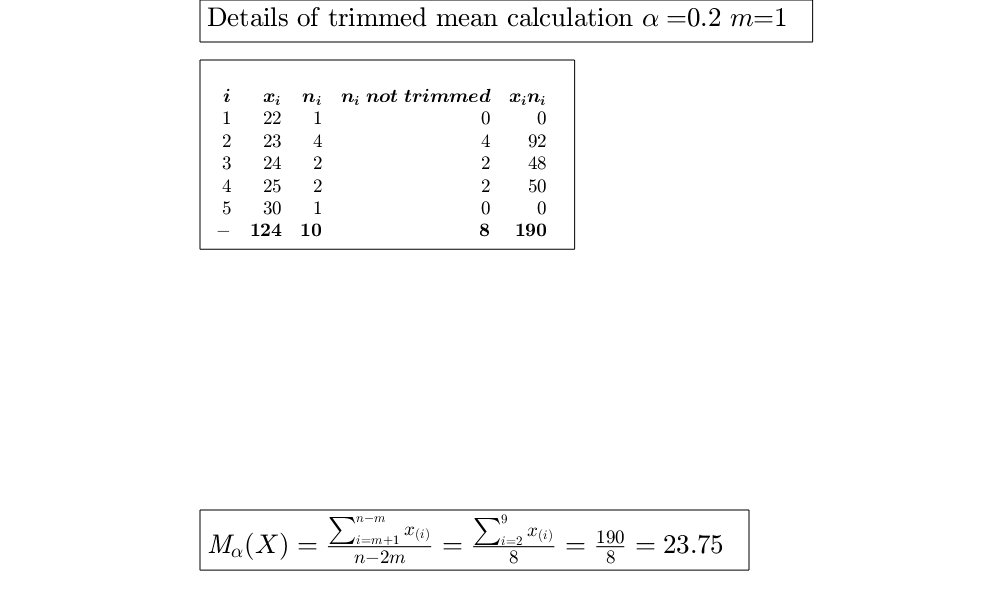GUItrimmean
GUItrimmean shows the necessary calculations to obtain the trimmed mean in a GUI.
Syntax
out=GUItrimmean(x,percent, freq)example
Description
Examples
Related Examples
Input Arguments
Output Arguments
References
Milioli, M.A., Riani, M., Zani, S. (2019), "Introduzione all'analisi dei dati statistici (Quarta edizione ampliata)". [MRZ]
Cerioli, A., Milioli, M.A., Riani, M. (2016), "Esercizi di statistica (Quinta edizione)". [CMR]

|
GUIstd |
GUIvar |
 |
|
|
Functions |
|
• The developers of the toolbox • The forward search group • Terms of Use • Acknowledgments
 Use of trimmed mean with 'percent' as per cent of trimming.
Use of trimmed mean with 'percent' as per cent of trimming.
